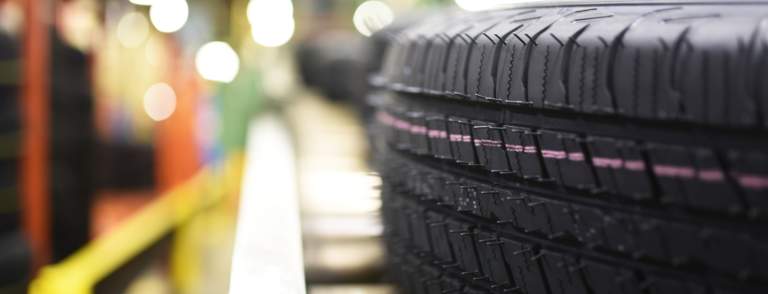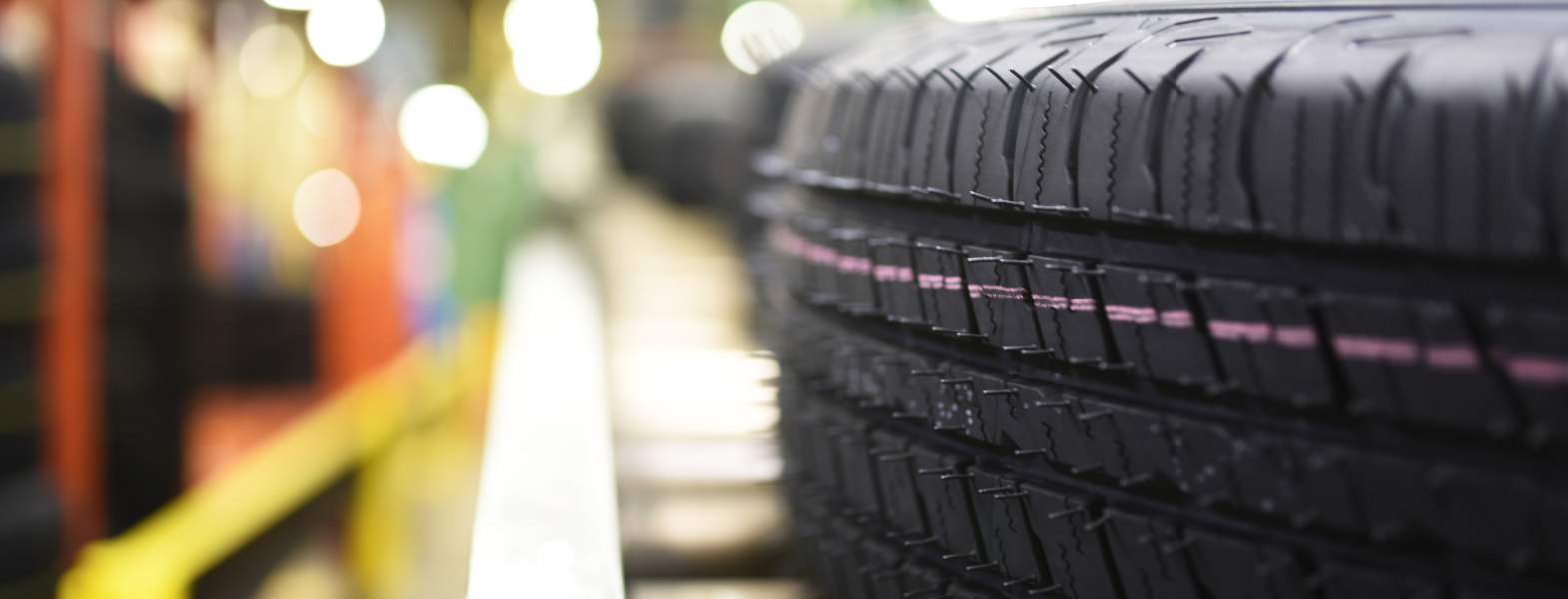December 14, 2016
$87 million investment will expand Tonawanda tire plant
The sprawling tire plant visible from the Niagara Thruway in the Town of Tonawanda pumps out 10,000 tires a day and employs 1,300 people.
Three years from now, after an $87 million investment that will reduce factory costs and add new jobs, the plant’s Japanese owner expects 17,000 tires to roll off the line a day.
Sumitomo Rubber USA’s investment will mean more jobs, a bigger factory and new equipment for the 93-year-old Tonawanda plant that, until recently, operated under the Goodyear Dunlop name.
It’s not the only longtime manufacturing plant undergoing an influx of investment in recent years. General Motors’ two plants and Ford’s metal stamping facility in Woodlawn have also seen renewed investment, with GM planning another announcement about its Tonawanda and Lockport plants on Wednesday.
At the tire plant, the goal for Sumitomo Rubber USA is to import fewer tires from its factory in Thailand and rely more heavily on the Tonawanda tire plant to make car and truck tires for the American market.
“The ideal situation is to make them here in the U.S., for the U.S. market, closer to the U.S. customers,” said Tim Noe, Sumitomo Rubber’s senior vice president of manufacturing. “But that only works if we get the costs down.”
Not so long ago, the tire plant’s future was much less certain.
Once just one of six sites in Goodyear’s network, the Tonawanda plant was part of a joint venture for 16 years between Goodyear and Sumitomo to produce tires under the Dunlop and Goodyear names. Union members worried at times whether Goodyear wanted to keep operating the Tonawanda plant, which was the smallest in its system.
In February 2014, Goodyear and Sumitomo announced they would dissolve their alliance, giving the plant a new direction. Sumitomo had bought the Tonawanda plant in 1986, and kept a 25 percent stake in it after forming the alliance with Goodyear in 1999.
Now, as Sumitomo’s sole U.S. tire plant, the Tonawanda factory is drawing renewed attention and investment. And it is essential to the company’s ambition to grow its U.S. presence and build up its Falken brand of tires.
“We treasure this plant,” said Kenji Onga, chairman and CEO of Sumitomo Rubber USA, “and also I believe there is a lot of opportunity here.”
Ownership change led to new investment
The Sheridan Drive complex, formerly called Goodyear Dunlop Tires North America, is already a workhorse, churning out tires for trucks, buses, and motorcycles, passenger cars and light trucks. Just over a year ago, Sumitomo reclaimed full ownership of the plant from Goodyear, after the business alliance between the two companies ended.
The plant is also a cornerstone of the Buffalo Niagara region’s manufacturing base. Add up its hourly, salaried, corporate and contract workers, and more than 1,300 people depend on the place for paychecks.
As Sumitomo ramps up production of its Falken brand of tires, the company’s investment in the Tonawanda plant will allow it to produce more passenger car and light truck tires, doubling local production in that category to 10,000 per pay from the current 5,000. Meanwhile, the complex has added more than 100 salaried jobs as it restores administrative functions Goodyear used to handle at its Ohio headquarters.
Increasing the number of tires the plant can make will help lower its expenses by spreading out fixed costs over a higher volume of tires. But Sumitomo also wants to eliminate waste and improve productivity and service levels across its business. The plant will add new, higher-output tire-building machines, as well as more curing presses, which handle the last big step in tire production. Those kinds of upgrades will allow the complex to increase its output.
“Most people when they see how tires are assembled are really surprised, because they think it’s just a mold, and you just pour some liquid into a mold or something along those lines, and that’s not that case at all,” Noe said.
Instead, it’s a complex series of steps that depend on a combination of employees’ tire-building skills and heavy-duty technology. The 1-million square foot production floor is filled with hulking machines and the scent of rubber, as a tire makes its journey from basic components like a sheet of rubber, all the way to the curing press that subjects a nearly complete tire to extreme heat to complete the process. The most complex tires contain up to 18 components, and each step must be completed carefully to ensure the tire will perform well on the road.
Sumitomo is determined to make a breakthrough in the U.S. market. Last year, it ranked ninth in North American tire sales, with just 2.6 percent of the $46.8 million market, according to Tire Business, which tracks the industry. Bridgestone Americas was the leader, followed by Michelin and Goodyear.
Sumitomo leaders say they have much wider latitude to operate in the U.S. market since its business alliance with Goodyear ended in October 2015. Sumitomo wants to secure more sales of “original equipment” tires – which automakers install on new cars and trucks – in addition to serving the replacement tire market.
Richard Smallwood, president and CEO of California-based Sumitomo Rubber North America, told Falken tire dealers earlier this year that the company’s goal was to have at least 5 percent original equipment market share by 2019 or 2020, according to Tire Business.
“It’s a huge opportunity, from a business standpoint and also from a factory standpoint,” Noe said. “To have that presence here in North America, (we are) able to respond more quickly to the (original equipment) market as well as the replacement market.”
Plant will ramp up production of Falken tires
Sumitomo wants to make Falken a familiar brand name, partly through raising customer awareness. As one step, Falken in fall 2015 replaced Firestone as the official tire sponsor of Major League Baseball.
While the Tonawanda plant will ramp up production of Falken car and truck tires over the next three years, it continues to make Dunlop-brand motorcycle tires, which are popular on the racing circuit, as well as Dunlop tires sold to Japanese automakers. Its production of Goodyear tires will steadily wind down as part of the two companies’ separation agreement.
The local conversion from Goodyear to Sumitomo is not limited to manufacturing. For years, Goodyear handled all kinds of administrative duties at its Ohio headquarters, from information technology systems to employee benefits. Sumitomo has re-established that work locally as the Goodyear relationship draws to a close, and has added about 110 salaried positions.
The four-year, $87 million investment, announced in August, will spur the increase in tire production capacity.
Noe expects spending at the plant to accelerate in 2017. The company has ordered equipment and plans to build an addition to its complex to provide more space for its expanded operations.
Sumitomo has sent about 150 specialists to the Tonawanda plant from Asia, for at least two or three weeks, or even months at a time, to support the transition from Goodyear.
Yoshimi Sekime, a retired foreman with Sumitomo, visited recently as a technical adviser.
“We want to keep the quality we have already – it’s good,” Sekime said through a translator. “But we’re going to have to improve the productivity.”
Noe said the Tonawanda plant benefits from Sumitomo’s input and guidance.
“It’s not just a financial investment,” Noe said. “It’s a people investment.”
The investment builds on a long history at the Tonawanda plant, which sits northwest of the Niagara Thruway between Buffalo and Grand Island.
End of Goodyear alliance a key moment
Dunlop Tire & Rubber Corp., based in Britain, opened the facility in 1923 to make tennis and golf balls, as well as tires. In the 1980s, the tire plant faced financial turmoil and ownership changes. BTR bought it before American investors acquired the business in 1985, amid fears the plant could close.
That set the stage for what Noe viewed as three key moments in the plant’s history.
The first was in 1986, when Sumitomo acquired Dunlop from local investors. From 1988 to 1992, Sumitomo poured $250 million into the Tonawanda plant.
The second moment came in 1999, when Sumitomo formed its joint venture with Goodyear, and kept a stake in Goodyear Dunlop Tires North America.
“We probably wouldn’t be here today if Sumitomo hadn’t found a partner then, because of economic conditions in Japan,” Noe said.
The third moment was just over a year ago, when the Goodyear-Sumitomo alliance ended.
“There’s really no reason this factory can’t be here another 93 years,” Noe said. “There really isn’t.”
Tonawanda to expand research and development
Noe understands the plant’s significance to the local economy as well as anyone. He was hired in 1978 and named plant manager in 2007. Goodyear in 2010 assigned him to manage a Virginia plant, then brought him back to lead the Tonawanda plant in early 2014.
Beyond expanding the capacity to make more tires, there is more to come at the plant, Noe said.
One of Sumitomo’s aims in having a North American factory, Noe said, is to create its own research and development center for its North American tire product in the United States.
“We’re developing the capability to do that here,” Noe said.
Onga noted that the American tire market differs from other countries. For instance, he said, American drivers prefer all-season tires, unlike their counterparts in Europe and Asia, who are accustomed to switching between summer and winter tires. Sumitomo also wants to capitalize on Americans’ affinity for SUVs, with tires for those vehicles.
Manufacturing workers are gearing up for full-scale production of Falken tires, said Thomas O’Shei, president of United Steelworkers of America Local 135, which represents hourly employees.
“We’re doing a ton of development in order to get those tires ready to be produced here, and we’ve got a couple of new automatic tire-building machines coming in over the next couple years,” O’Shei said.
It’s a big transition, but O’Shei said workers like what they have seen so far. He remembers when workers wondered what the plant’s fate might when it was still part of Goodyear’s network.
“Everybody’s feeling pretty good about it,” he said. “We all feel we’re moving in the right direction, and we just want to make sure that we keep moving that way. We know that we still have a little to do on our part.”



